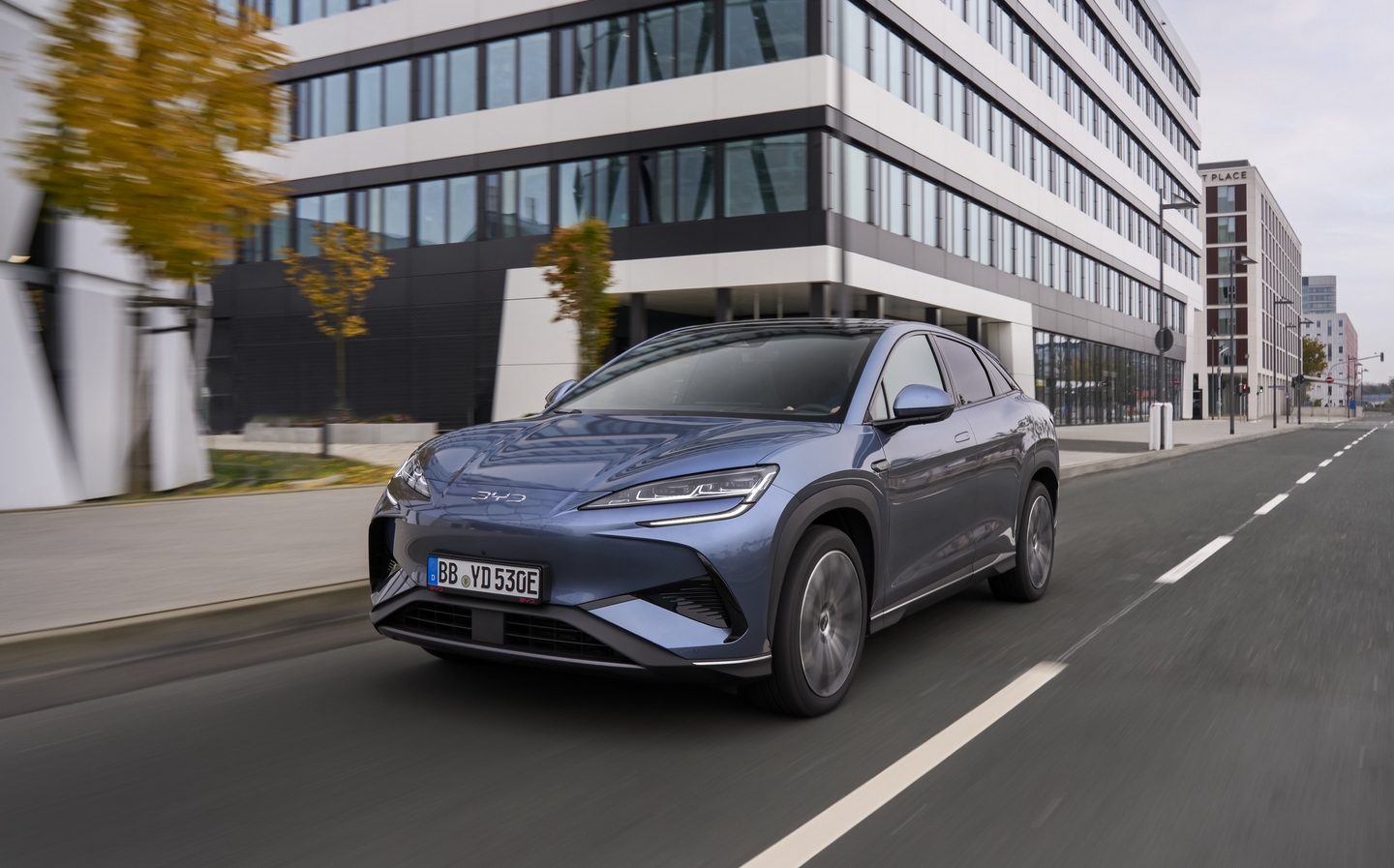BYD Sealion 7 2024 review: A different take on “China Speed” with BYD's 522bhp SUV coupé
Silly name but a sensible offer
The phrase “China Speed” is typically used by industry analysts or savvy reporters commenting on the extraordinary rate of economic development within the PRC (People’s Republic of China). While it’s true that almost all industries in that country seem to operate and iterate at a much faster pace than Europe or North America, these days the term China Speed can also apply to the performance of its electric cars. Not only are sales volumes ratcheting up, so too are the power outputs.
BYD (Build Your Dreams) remains the leader of the influx of new Chinese brands to Europe, and next year it will open its first production plant in Hungary with an output of 150,000 cars per year, hoping to avoid some of the potential tariffs being imposed on imports by the EU.
But its new model onslaught continues apace, and the latest car to join the line-up is the Sealion 7, an electric SUV with coupé-like styling and plenty of punch.
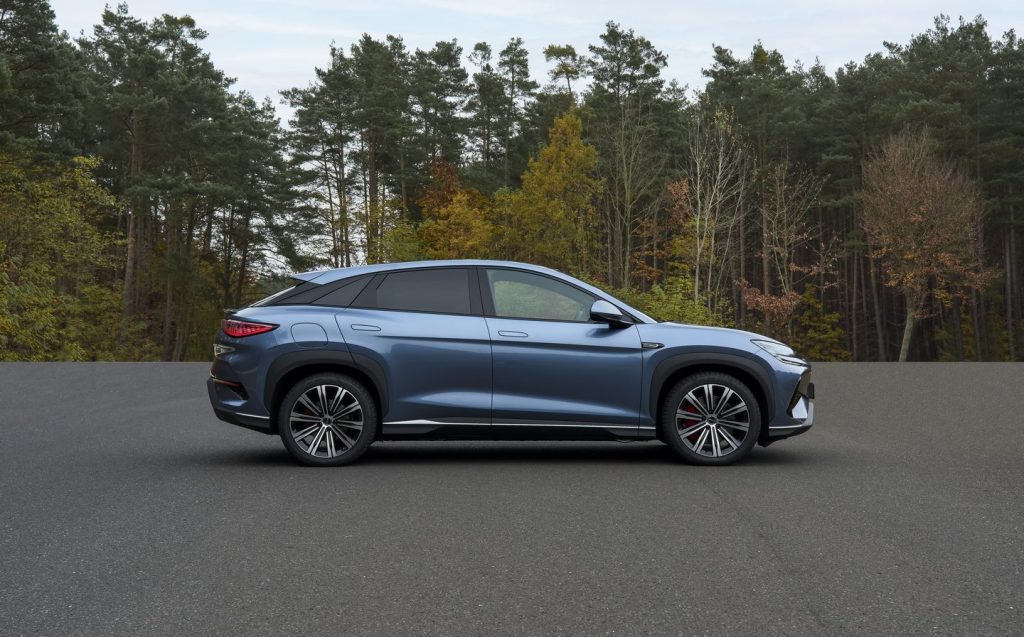
The Sealion 7 sits at the larger end of the mid-size SUV class, with a pure-electric powertrain and a sporty design that pits it against models such as the Volkswagen Group’s triumvirate of Skoda Enyaq Coupé, Volkswagen ID.5 and Cupra Tavascan, as well as segment stalwarts such as the Tesla Model Y, and even the Ford Mustang Mach E. It’s a busy part of the market. So how is BYD planning on standing out? Largely, by giving buyers (almost) everything.
It might not be the trendiest of names but the Sealion 7 fits in with the crowd when it comes to appearance and size. At 4,830mm long and 1,620mm tall, it’s lengthier than almost all of its competitors but around the same height. There’s a BYD family resemblance around the front of the Sealion 7, with similar LED headlights to those found on the Seal saloon and Seal U DM-i plug-in hybrid SUV.
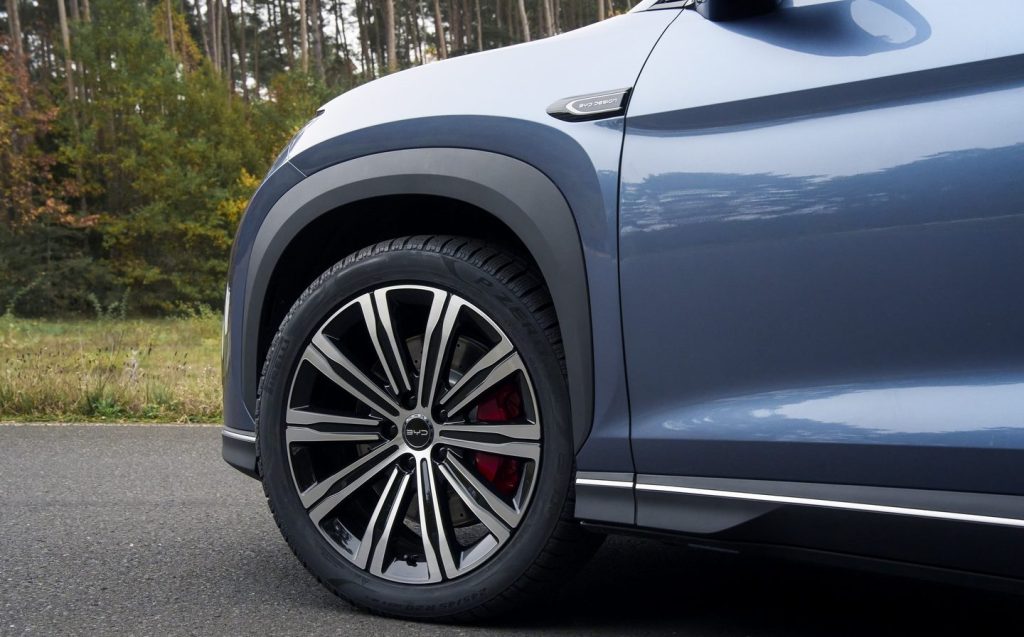
Other styling details include 19in wheels as standard (20in on the Excellence AWD reviewed here), squared-off wheel arches, flush-fitting door handles that retract into the bodywork when the car is locked, and a gently sloping roofline that hints at a sportier nature without being so dramatic as to impinge on the car’s practicality. Generally, it all comes together as a cohesive design, though there’s nothing groundbreaking going on here.
What is slightly disappointing to see is that BYD has fallen into the trap of not providing a rear window wiper, instead insisting that the airflow over the glass will help keep it clear and clean. Wipers can also do that, even at a standstill.
Inside, a slightly raised sports seat provides a good driving position with plenty of visibility all-round. The flat-bottomed multifunction steering wheel is a decent size, not overly thick-rimmed, and has metallic buttons that are easy to find with your thumb. The wheel can be manually adjusted for reach and rake, while the driver’s seat gets eight-way electric adjustment. The front passenger seat gets six-way electric adjustability while both seats are heated and ventilated as standard — that’s an extra in many cars.

All the expected boxes are ticked in the cabin, including a 10.25in digital instrument panel behind the steering wheel. It’s clearly laid out with all the relevant information, and our top-spec car also had a colour head-up display projecting on the windscreen. The 15.6in touchscreen provides plenty of digital real estate, but with nothing else beyond a pair of air vents occupying the centre console, it fills up the space well and appears to float free of the dashboard.
As with other BYD models, the touchscreen’s party piece is an ability to rotate through 90 degrees, providing the choice of landscape or portrait orientations. We found the latter to be useful for navigation, although if you want to use either Apple CarPlay or Android Auto (both available wirelessly) you’ll have to stick with the landscape setting.
The native infotainment system has received a performance bump by way of a Qualcomm 8155 chipset boosting graphics and animations, and a general overhaul of the menus. It’s more intuitive to use than in other BYDs, though we expect many will prefer to use the smartphone mirroring options.
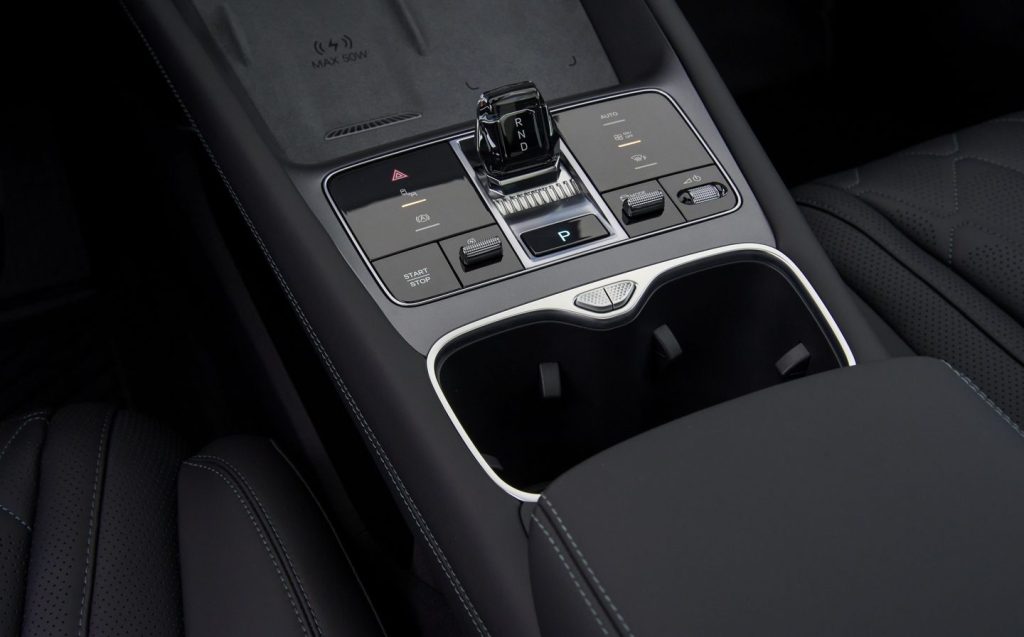
A 50W wireless charging pad on the centre console is a welcome addition, and unlike many such setups, it does a solid job of keeping your phone in place so it’s always charging. It even has a small cooling fan to help prevent your device’s battery from overheating.
Another storage area underneath the centre console is large enough for a small bag and contains a pair of 60W USB-C charging ports. The cupholders have a nifty feature that allows you to increase their depth to make it easier to accommodate small drinks bottles without having them sticking up high, and beneath the centre armrest is another storage bin.
Our test car was equipped with Nappa leather upholstery, but the base and mid-range models are outfitted with an artificial leather material. Overall fit and finish of the interior is solid though some of the plastic surfaces look and feel a bit on the cheap side.
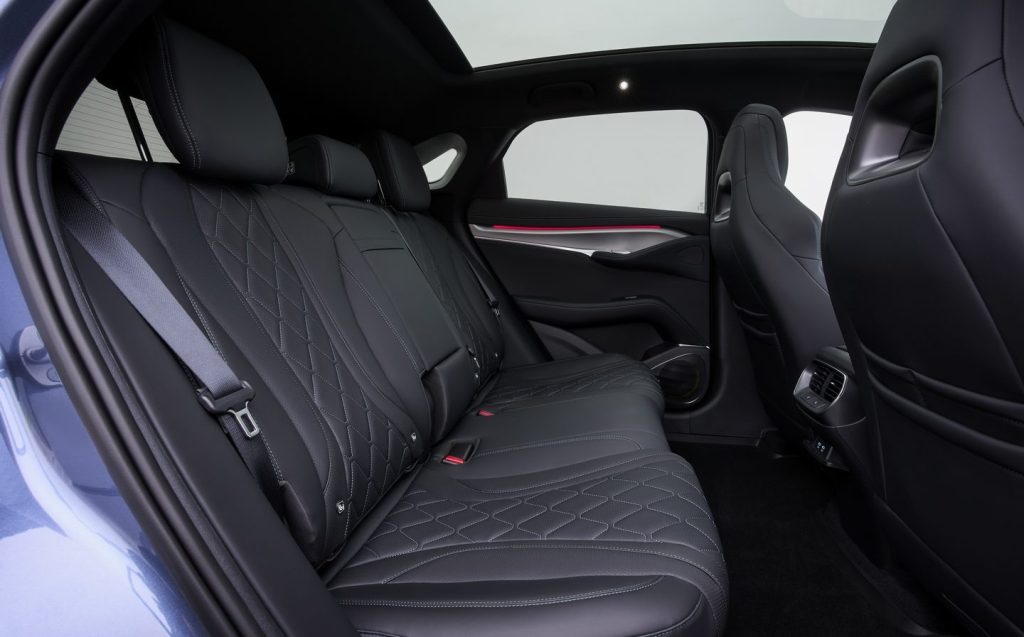
Rear passengers will have little to complain about as there’s very generous amounts of legroom and headroom. Manual adjustment of the angle of the seat backs in the rear helps to add a bit of comfort, and the standard panoramic glass roof enhances the sense of space in the back.
The Sealion 7 also gets a decent 520-litre boot which can increase to 1,789 litres of volume when the 60:40 split-folding rear seats are tumbled forward. Underneath the bonnet, there’s a further 58 litres of storage.
There are two performance outputs for the BYD Sealion 7 and naturally, as BYD wants us to be impressed, we’ve only had the opportunity to test the more potent of those. Both all-wheel-drive versions get a dual-motor set-up producing up to 522bhp, and while the Design AWD gets an 82.5kWh battery for an official range of 283 miles, the range-topping Excellence AWD features a higher capacity 91.3kWh battery, raising the range to a claimed 312 miles. Oddly, despite a 95kg weight gain, this car is no slower, accoridng to the spec sheet, and it comes with a faster peak recharging speed on DC chargers, at up to 250kW (versus 150kW for the smaller battery).
The twin-motor system doubles the braked towing capacity to 1,500kg (over the single-motor version), but that isn’t as high as some others offer in the segment.
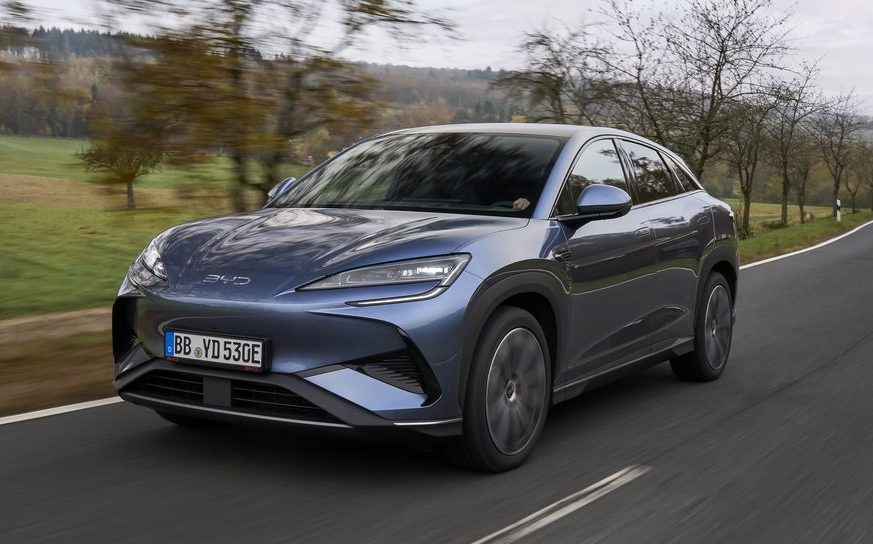
The sheer force of acceleration when you demand it is instantaneous and sustained, though once the initial novelty of doing a few full-power blasts wears off, you do have to wonder why any family car needs that much performance.
From a standing start the official 0-62mph figure is 4.5 seconds, though BYD staff boasted that they’ve seen it do it even faster and, rather than downplay its capabilities, there’s a “4.5s” badge proudly displayed on the back so everyone can see you’ve got “the fast one”. Indeed, at seemingly any speed, a short sharp prod of the right pedal will see this Sealion 7 adding speed at a rate that even the digital speedometer seems to struggle keeping up with.
Thankfully, that power is only there when you go looking for it, and should you stick to the default Normal drive mode and go about your business, you’d barely think there was so much performance sitting in reserve. Instead, it’s the refinement that you’ll notice, as very little noise makes it into the cabin. That’s thanks to acoustically optimised glass and plenty of sound absorbing material.
This quietness not only makes the drive more pleasant, but it subtly demonstrates the build quality, as any potential squeaks or rattles would be more obvious. We experienced none during our time with the car.
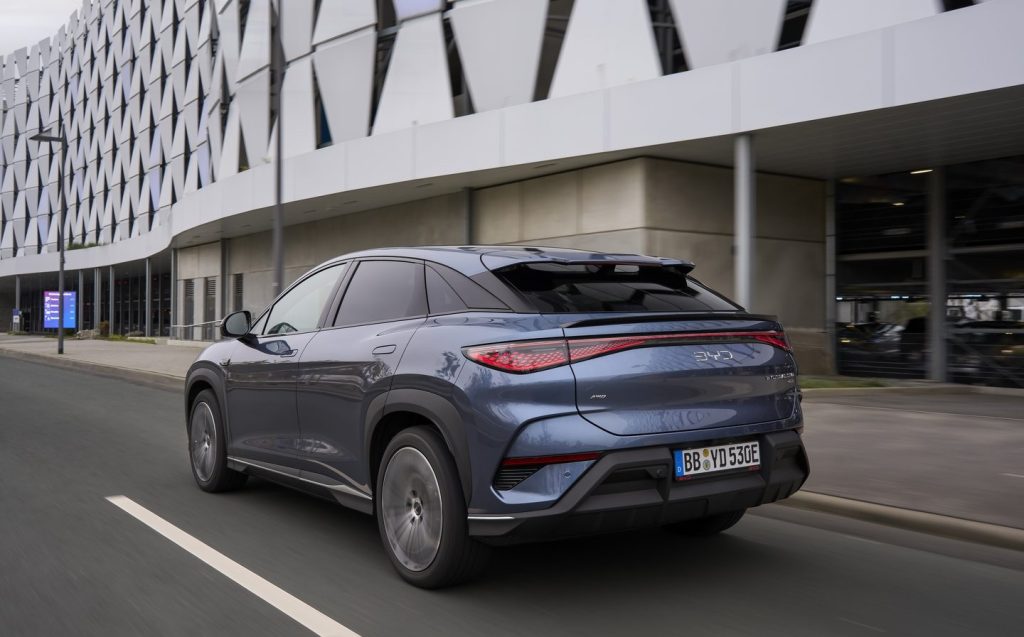
Despite the civility, there’s a clear difference in remit between the BYD Seal U DM-i hybrid SUV, which is too soft on the road for its own good, and the Sealion 7, which is notably more sporting. It uses “Frequency Variable Damping” in the suspension that controls the flow of oil inside the dampers to better adjust to the road surface underneath. This results in a firmer feel that contributes to the car’s character.
Over a variety of surfaces, the Sealion 7 delivered a competent and mostly refined driving experience, though the ride quality can feel busy at times, particularly over broken surfaces. The driver can adjust the steering weight, although putting into its sportier setting does little to increase any sense of involvement. And that’s really the story of the Sealion 7; it’s incredibly good at the A to B stuff, but despite some efforts to add a more dynamic tune, it all falls a bit flat in that respect.
The Sealion 7’s roadholding isn’t in question, although you do get a reminder of the car’s weight should you tip into a tightening radius bend with a bit too much speed. Much of that can be alleviated by dialling up the level of regenerative braking, with the strongest mode providing a consistent one-pedal driving experience. Regardless of setting though, there’s consistent feel from the brake pedal which is another confidence boost to drivers.
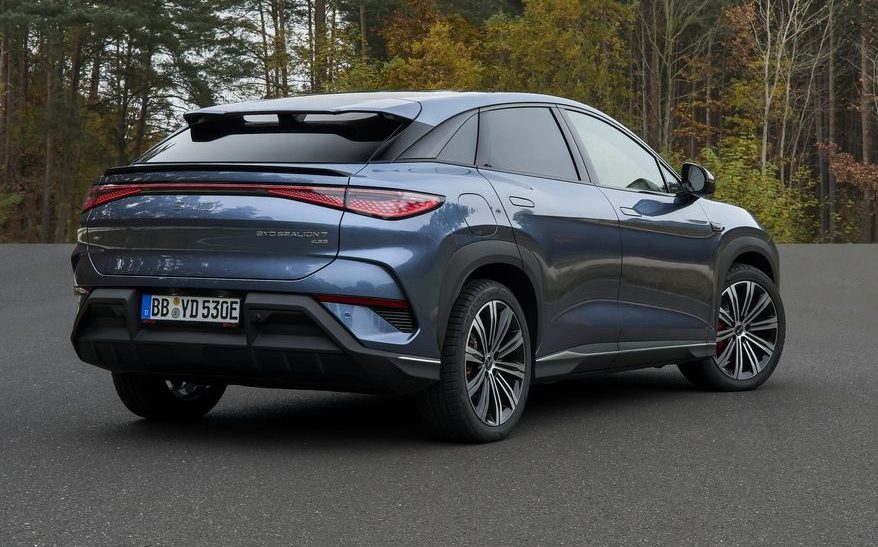
Regardless, more buyers are likely to be drawn to the lower price of the single-motor Comfort variant. Assuming you don’t have a need for both axles to be driven, nor the lust for head-rest-testing acceleration, then the entry-point to the Sealion 7 range will serve you very well, especially when you realise that you get virtually all the equipment you could ask for as standard. UK prices haven’t been announced but we expect the entry-level car to be in the region of £46,000, rising to well over £50,000 for the dual-motor models.
And it’s value, more so than the outright performance, that the Chinese brands such as BYD are winning the race with, when so many other car companies are demanding optional upgrades and packs, the more streamlined approach to only needing to choose powertrain and colour makes for a refreshing change.
Chinese carmakers
BYD Auto is a Chinese carmaker owned by BYD Company, a manufacturing firm that specialises in batteries, with headquarters in Shenzhen, China.
Related articles
- If you found our review of the BYD Sealion 7 interesting, you might like to read our review of a hybrid alternative from BYD, the Seal U
- Or check out the best-selling new cars of 2024 in the UK
- Here’s what Will Dron had to say about the BYD Dolphin
Latest articles
- Carmakers fined £461m in UK and Europe for not competing over vehicle recycling
- Volkswagen Tayron 2025 review: Useful seven-seat SUV and decent PHEV — just not at the same time
- Skoda Enyaq 2025 review: Same book, different cover for electric SUV
- Lewis Hamilton wants to design a modern day Ferrari F40 with manual gearbox
- Dacia Bigster 2025 review: The ‘anti-premium’ family SUV that punches above its weight
- Your car’s worn tyres could be being burnt illegally in India, investigation reveals
- Open-top 214mph Aston Martin Vanquish Volante is world’s fastest blow-dry
- F1 2025 calendar and race reports: The new Formula One season as it happens
- Alfa Romeo Junior Ibrida 2025 review: Hybrid power adds an extra string to crossover’s bow


